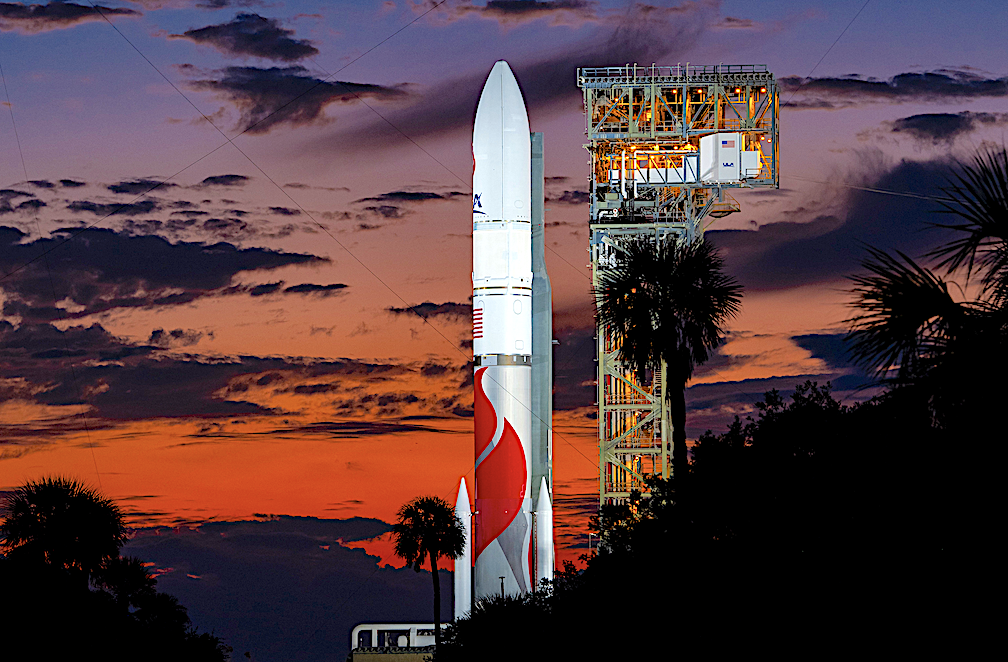
The United Launch Alliance (ULA) Vulcan rocket sits on the pad at Space Launch Complex-41 (SLC-41) at Cape Canaveral at sunset in advanced of the Cert-2 flight test. Photo Credit: United Launch Alliance
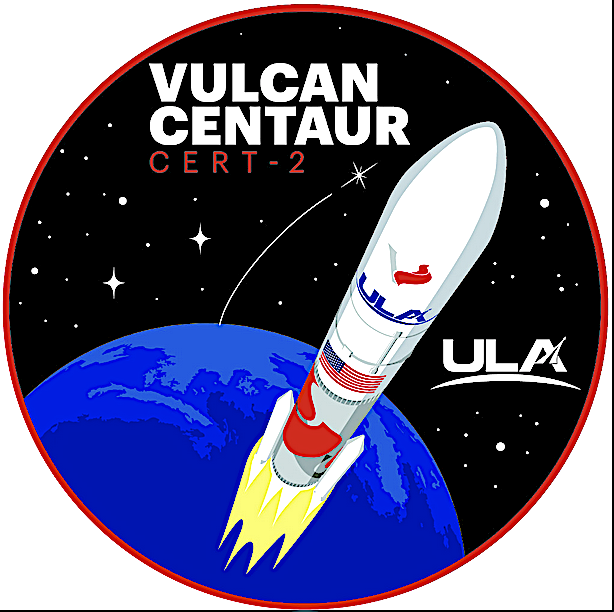
Everything continues to progress towards the ULA Vulcan launch carrying the Cert-2 mission. The mission is planned to lift off on Friday, October 4 from Space Launch Complex-41 at Cape Canaveral Space Force Station in Florida. The launch is planned for 6:00 a.m. EDT. Today’s forecast shows an 80 percent chance of favorable weather conditions for launch.
Launch Forecast Summary:
- Overall probability of violating weather constraints: 20%
- Primary concerns: Cumulus Cloud Rule
- Overall probability of violating weather constraints for 24-hour delay: 25%
- Primary concern: Cumulus Cloud Rule

Booster Transport: Vulcan Cert-2
The United Launch Alliance (ULA) Vulcan Certification-2 (Cert-2) booster is transported from ULA’s Rocket Factory in Decatur, Alabama to R/S RocketShip to begin its journey to the launch site at Cape Canaveral Space Force Station., Florida. Photo credit: United Launch Alliance
Weather still 80% GO
In the countdown’s first weather briefing, the 45th Weather Squadron at the Space Force’s Space Launch Delta 45 reports that conditions at Cape Canaveral are looking favorable for the flight of Vulcan. The forecast calls for an 80 percent chance of acceptable conditions at liftoff time.
All conditions are GO at the current moment, and the outlook for launch time includes scattered clouds and high cirrus, good visibility, easterly winds of 13 to 18 knots and a temperature near 80 degrees F.
Brief coastal rain showers pose the primary concern for violating the launch weather rules during the window.
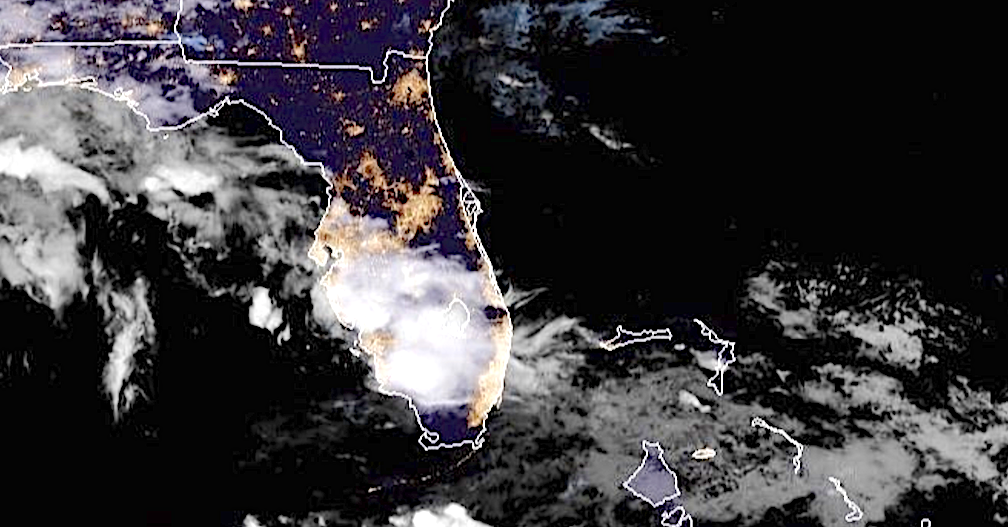
Countdown activities continue on schedule at the Space Launch Complex-41 pad and inside the Advanced Spaceflight Operations Center for liftoff just over 9 hours from now. The ULA engineering teams at the Cape Canaveral launch site and Denver headquarters are not working any issues that would preclude a predawn liftoff at 6:00 a.m. EDT (1000 UTC).
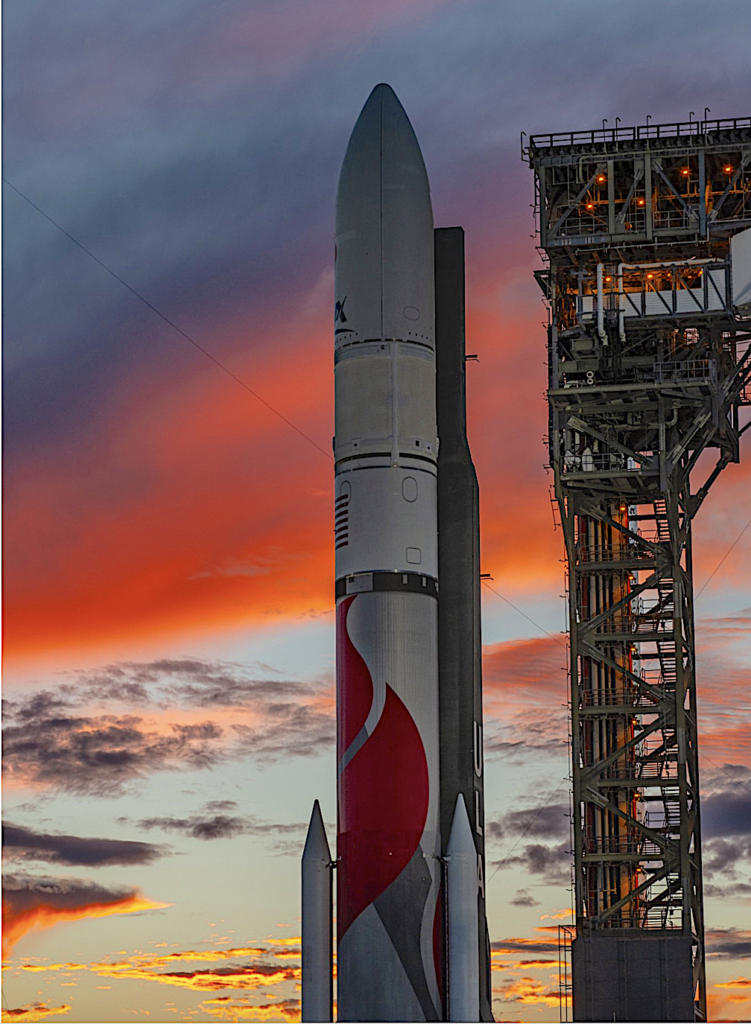
Vulcan countdown begins
United Launch Alliance initiated the launch countdown at 7:40 p.m. EDT (2340 UTC) for the second flight of the Vulcan rocket from Cape Canaveral Space Force Station in Florida. This important mission will fulfill flight test obligations and complete its certification process with the U.S. Space Force to carry national security payloads starting later this year.
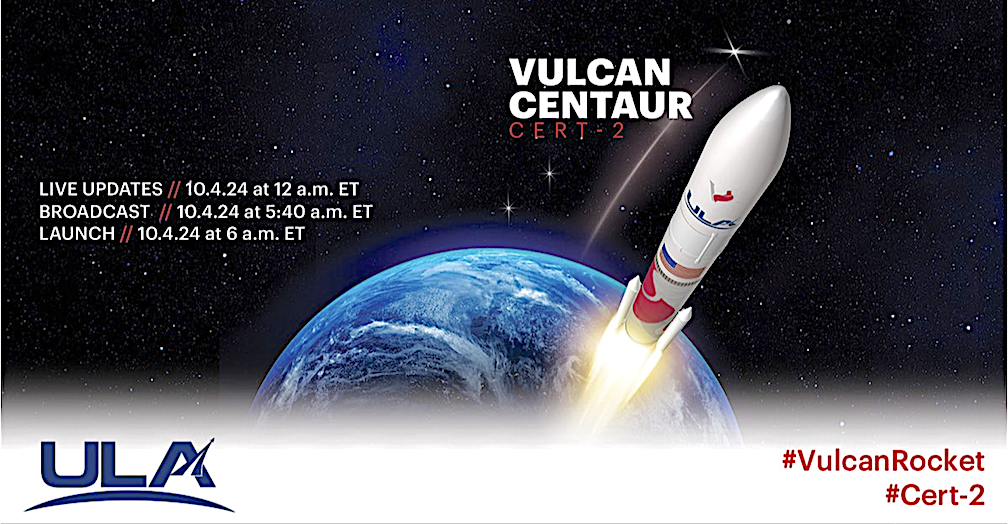
The countdown started from T-minus 8 hours, 50 minutes but will span more than 10 hours from now through liftoff with two pre-planned built-in holds scheduled in the count. One 30-minute pause is reserved prior to fueling at T-minus 4 hours, 30 minutes; the other 60-minute hold occurs prior to the Terminal Count at T-minus 7 minutes.
Activities are on schedule for liftoff from Space Launch Complex-41 at 6:00 a.m. EDT (1000 UTC). There is a three-hour window, extending to 9:00 a.m. EDT (1300 UTC), for liftoff to occur.
Power up of the Vulcan and Centaur V stages is now underway to energize the rocket for the start of today’s countdown procedures to begin launch day testing and final preparations for fueling operations.
Over the next few hours, final preps for the Centaur V liquid oxygen and liquid hydrogen systems will be performed, along with the first stage pneumatics, propulsion and hydraulic preps, a test of the rocket’s guidance system, flight control testing of both stages and checks made of internal batteries. Validations will also be performed on the GPS Metric Tracking system used to follow the rocket as it flies downrange and the S-band telemetry relay system.
Our live, play-by-play updates from Vulcan Launch Control will begin at 12 midnight EDT (0400 UTC) as we prepare for loading cryogenic propellants into the rocket.
Weather 80% GO for Friday’s launch
The forecast from the Space Force’s Space Launch Delta 45 weather squadron and Launch Weather Officer Brian Belson for Friday morning’s launch of Vulcan indicates an 80 percent chance of acceptable conditions during the three-hour window.
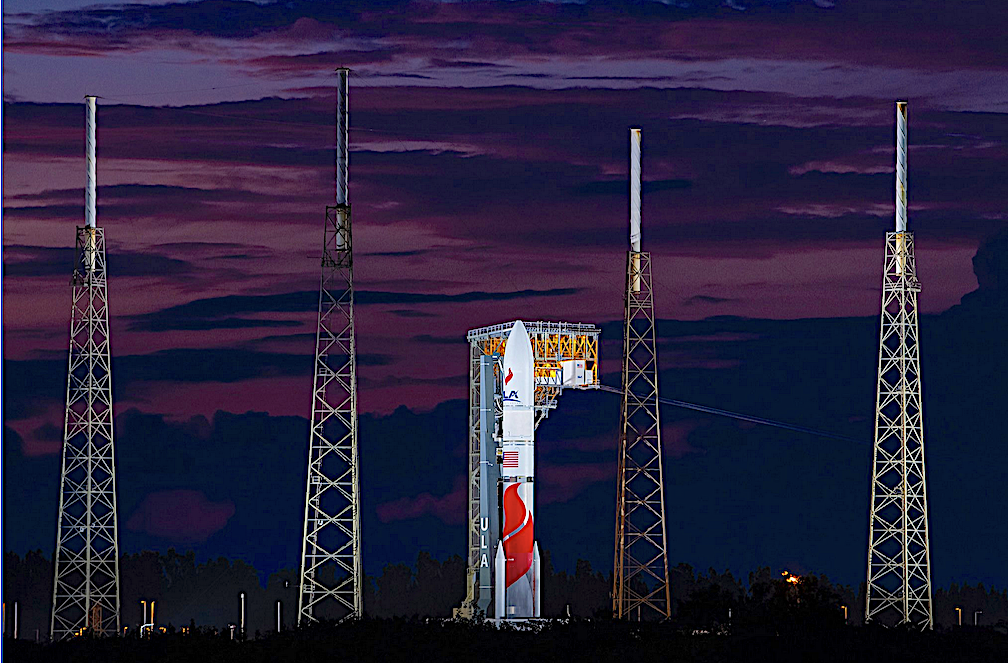
“A large area of high pressure is expected to slowly move across the eastern seaboard through Saturday, bringing onshore winds and fast-moving, light coastal shower activity to the Spaceport Friday and Saturday morning. Although a few storms that develop inland may move near the Cape in the early morning hours, they are unlikely to be a concern by the opening of the launch window,” the weather team says.
“Additionally, any thunderstorms that develop off the coast should move further offshore, making the Cumulus Clouds Rule the most likely weather constraint violation for both the primary and backup day.”
The launch time forecast for 6 a.m. EDT (1000 UTC) includes scattered clouds and high cirrus, good visibility, easterly winds 13 to 18 knots and a temperature near 80 degrees F.
If the launch moves to the backup opportunity on Saturday for some reason, there is a 75 percent chance of meeting the weather rules with similar conditions.
ULA says GO! signs Launch Readiness Certificate for Friday’s Vulcan Cert-2 mission launch
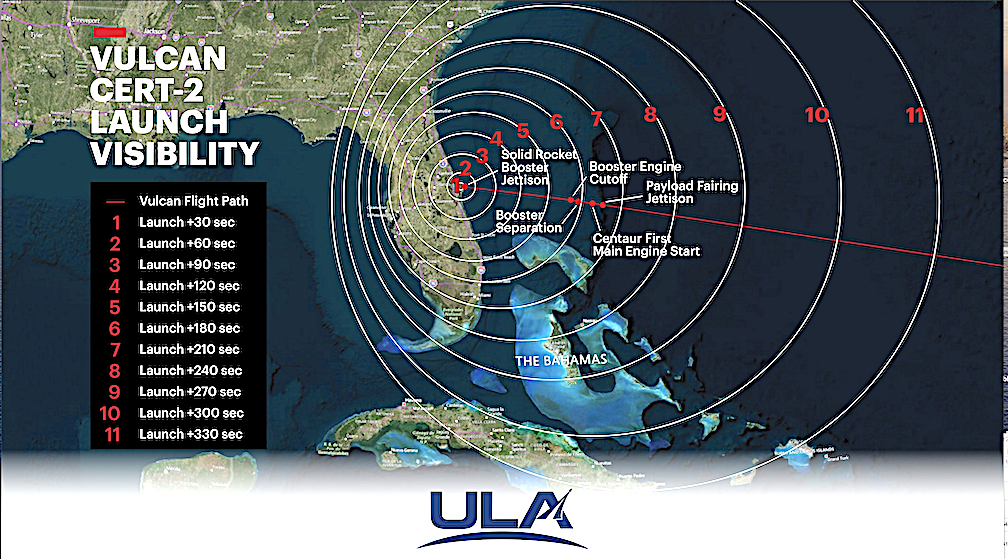
The Launch Readiness Review (LRR) is GO for Friday’s liftoff of the United Launch Alliance Vulcan rocket on the Certification-2 (Cert-2) flight test.
Liftoff is scheduled for 6:00 a.m. EDT (1000 UTC) from Space Launch Complex-41 at Cape Canaveral Space Force Station in Florida.The LRR, led by ULA Launch Director Eric Richards, was completed this morning at the Advanced Spaceflight Operations Center (ASOC).
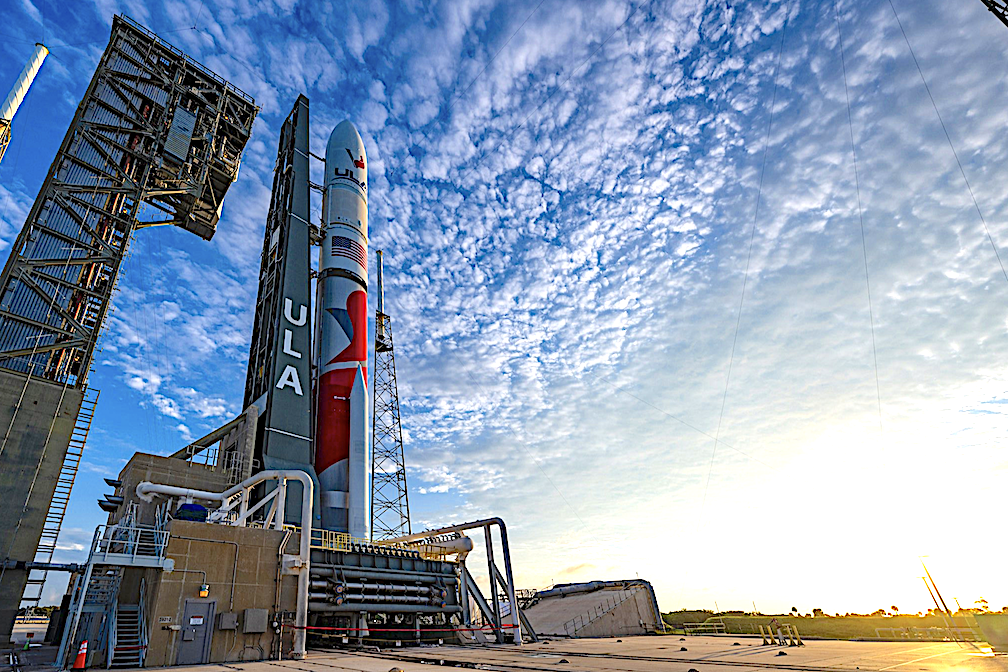
Leadership from ULA and the Space Force assessed the readiness of the rocket, payload and mission assets, discussed the status of pre-flight processing work, heard technical overviews of the countdown and flight, and previewed the weather forecast that projects a 75 percent chance of meeting the launch rules.
At the conclusion of the meeting, senior leaders were polled and gave a ready status for launch, then signed the Launch Readiness Certificate.
The Vulcan VC2S rocket, designated V-002, stands 202 feet (61.6 meters) tall and will launch an inert payload into deep space while fulfilling certification requirements with the Space Force to perform future national security missions.
ULA will offer live reports from launch control in our automatically refreshing blog beginning Friday at 12 midnight EDT (0400 UTC). The launch webcast starts at 5:40 a.m. EDT (0940 UTC).
Everything continues to progress towards the ULA Vulcan launch carrying the Cert-2 mission. The mission is planned to lift off on Friday, October 4 from Space Launch Complex-41 at Cape Canaveral Space Force Station in Florida. The launch is planned for 6:00 a.m. EDT. Today’s forecast shows an 80 percent chance of favorable weather conditions for launch.
Launch Forecast Summary:
- Overall probability of violating weather constraints: 20%
- Primary concerns: Cumulus Cloud Rule
- Overall probability of violating weather constraints for 24-hour delay: 25%
- Primary concern: Cumulus Cloud Rule
ULA L-3 Update Vulcan Cert-2 mission ready for launch
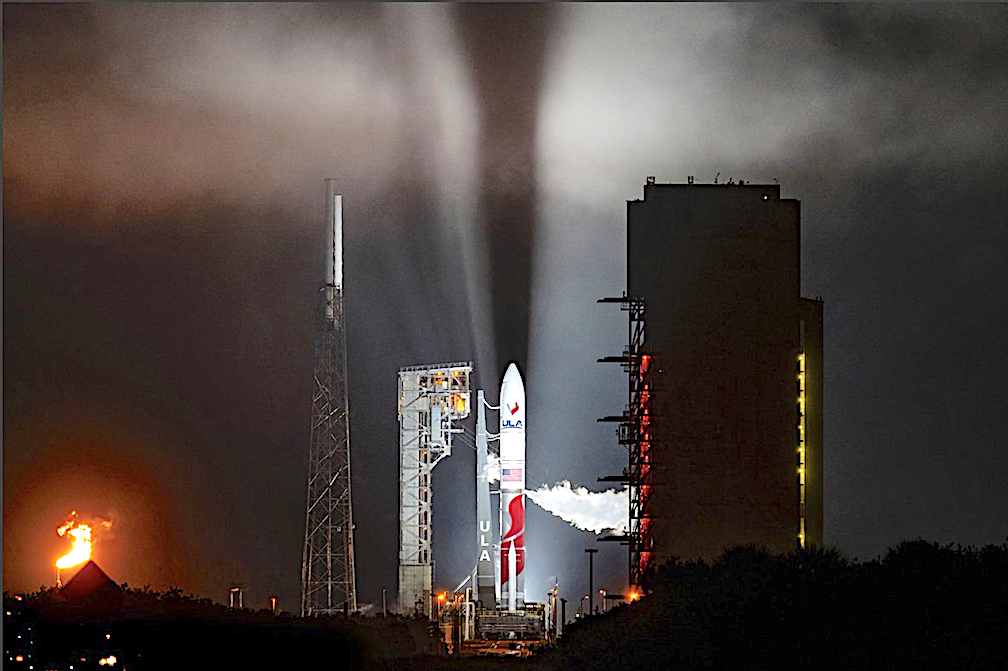
Everything continues to progress towards the ULA Vulcan launch carrying the Cert-2 mission. The mission is planned to lift off on Friday, October 4 from Space Launch Complex-41 at Cape Canaveral Space Force Station in Florida. The launch is planned for 6:00 a.m. EDT.
The Cert-2 mission serves as the second of two certification flights required for the U.S. Space Force’s certification process. Vulcan continues the legacy of Atlas as the world’s only high energy architecture rocket and ushers in a new, innovative capability to meet the ever-growing requirements of space launch.
Today’s forecast shows a 75 percent chance of favorable weather conditions for launch.
Launch Forecast Summary:
- Overall probability of violating weather constraints: 25%
- Primary concerns: Cumulus Cloud Rule
- Overall probability of violating weather constraints for 24-hour delay: 25%
- Primary concern: Cumulus Cloud Rule
Vulcan rolls out for Wet Dress Rehearsal preparing to launch on second certification mission (CERT-2)

A United Launch Alliance (ULA) Vulcan VC2S rocket will launch the second certification (Cert-2) mission from Space Launch Complex-41 at Cape Canaveral Space Force Station, Florida, on Friday, October 4, 2024 during a window of 6:00 to 9:00 a.m. EDT. The Cert-2 mission includes an inert payload and demonstrations associated with future Centaur V technologies. This is the second of two test flights required for ULA’s certification process with the U.S. Space Force.
It’s rollout day. ULA is making final preparations for Cert-2 rollout day at Cape Canaveral!
The second #VulcanRocket will move to Space Launch Complex-41 for this week’s Wet Dress Rehearsal (WDR) prior to the launch no earlier than Friday at 6 a.m. EDT (1000 UTC).

United Launch Alliance (ULA) hoists the Cert-2 mission payload atop the Vulcan rocket in the Vertical Integration Facility-G (VIF-G) adjacent to Space Launch Complex-41 at Cape Canaveral Space Force Station. Photo credit: United Launch Alliance
This week’s Wet Dress Rehearsal (WDR) will see the #Cert2 #VulcanRocket loaded with a million pounds of cryogenic propellants at Space Launch Complex-41 and put through a complete countdown procedure as part of certification.
For #Cert2 flight, the #VulcanRocket is flying in the Vulcan VC2S variant. It uses two BE-4 methane-fueled main engines, two GEM 63XL solid rocket boosters, dual RL10C-1-1A engines on the Centaur V upper stage and a standard-length, 5.4m Out-of-Autoclave (OoA) payload fairing.


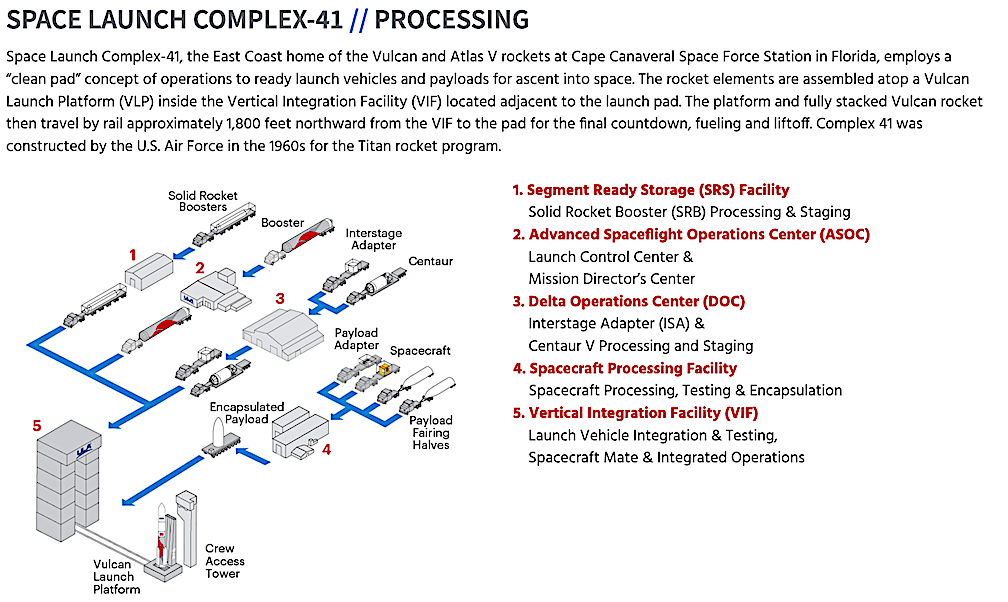

GO Vulcan! GO Centaur! GO Cert-2!
ULA to launch Vulcan second certification mission, and continues the legacy of Atlas
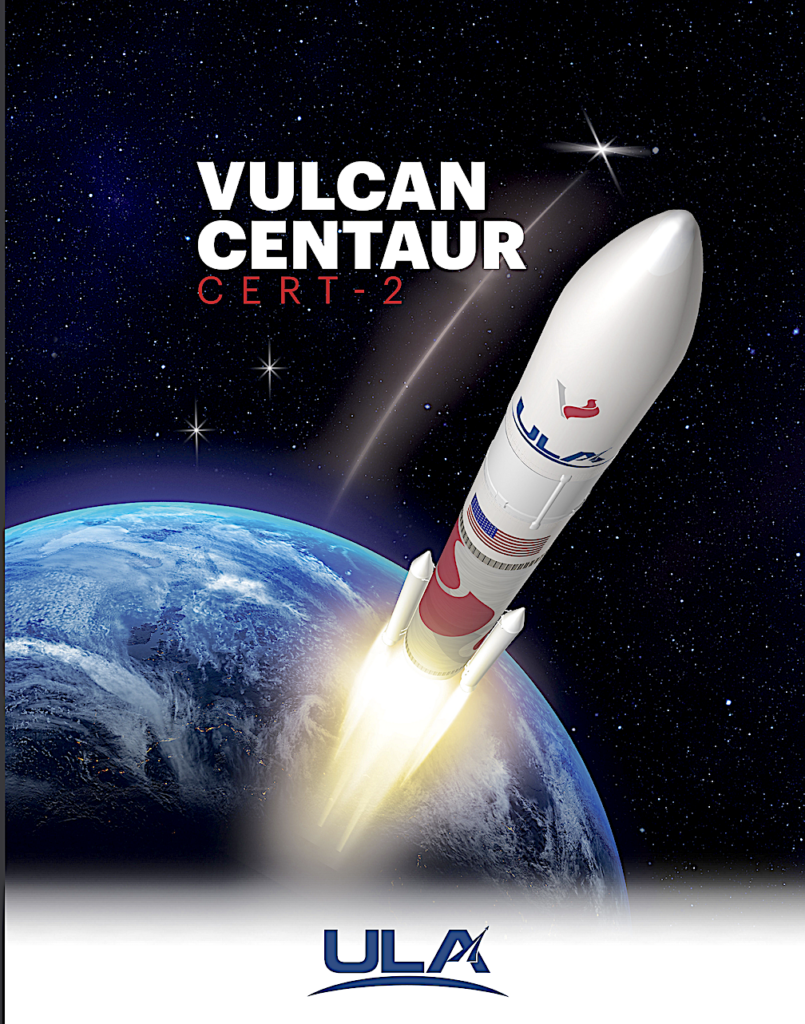
The United Launch Alliance second Vulcan certification flight (Cert-2) is scheduled for no earlier than (NET) October 4 from Space Launch Complex-41 at Cape Canaveral Space Force Station, Florida, during a window of 6:00 to 9:00 a.m. EDT.
The Cert-2 mission serves as the second of two certification flights required for the U.S. Space Force’s certification process. Vulcan continues the legacy of Atlas as the world’s only high energy architecture rocket and ushers in a new, innovative capability to meet the ever-growing requirements of space launch.

Centaur V stacking: Vulcan Cert-2
United Launch Alliance (ULA) hoists its Centaur V upper stage atop the Vulcan Cert-2 booster into the Vertical Integration Facility (VIF) adjacent to Space Launch Complex-41 at Cape Canaveral Space Force Station. Photo credit: United Launch Alliance
The Cert-2 mission includes an inert payload and demonstrations associated with future Centaur V technologies. This is the second of two test flights required for ULA’s certification process with the U.S. Space Force.
